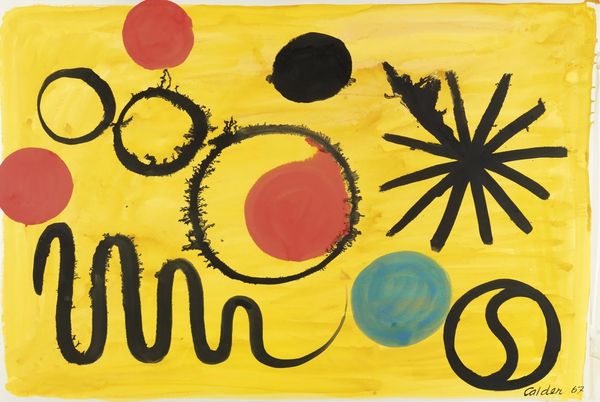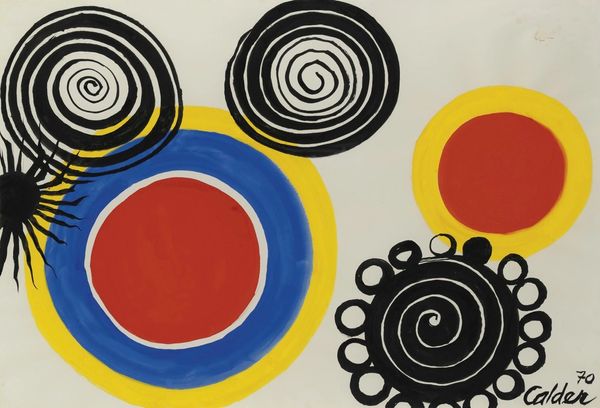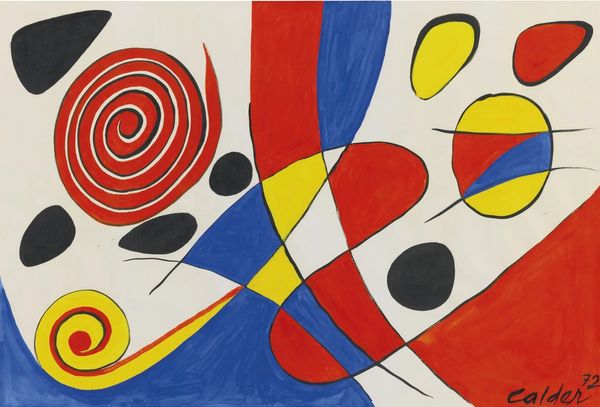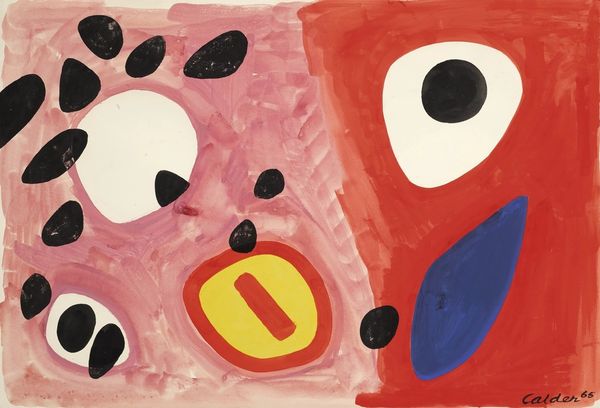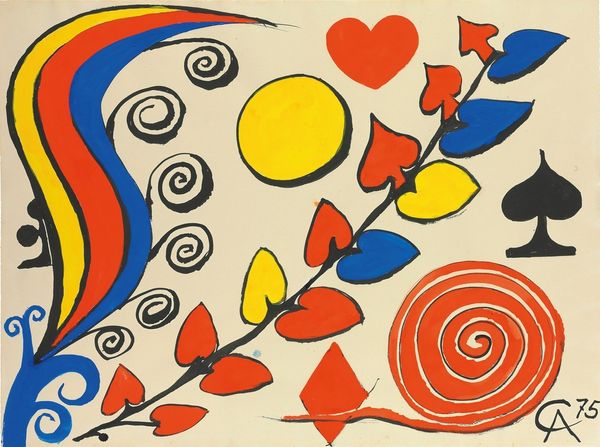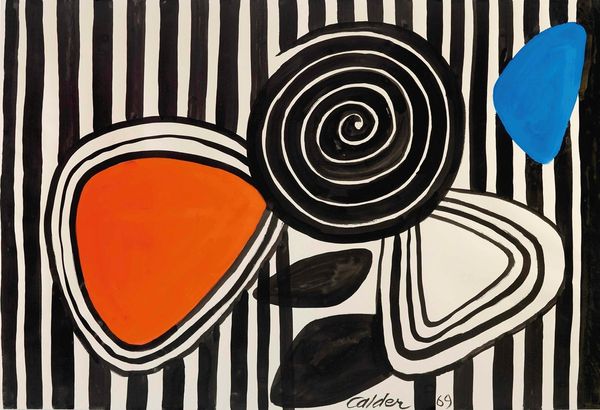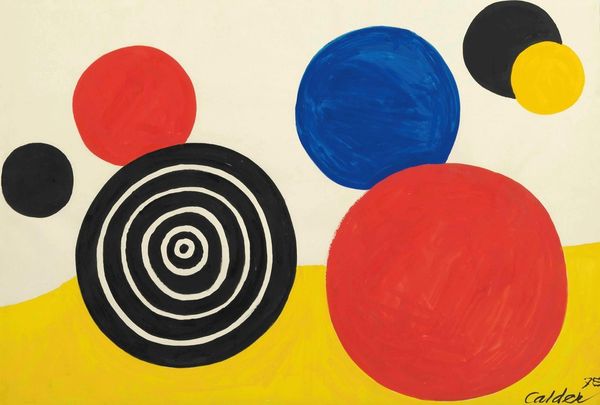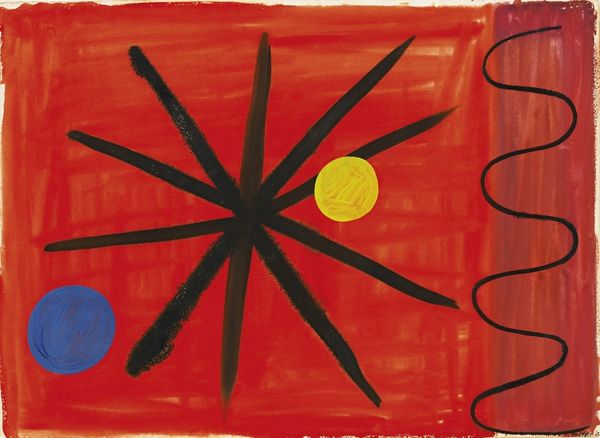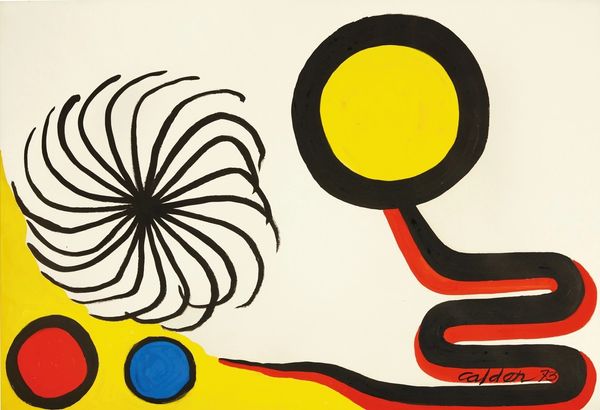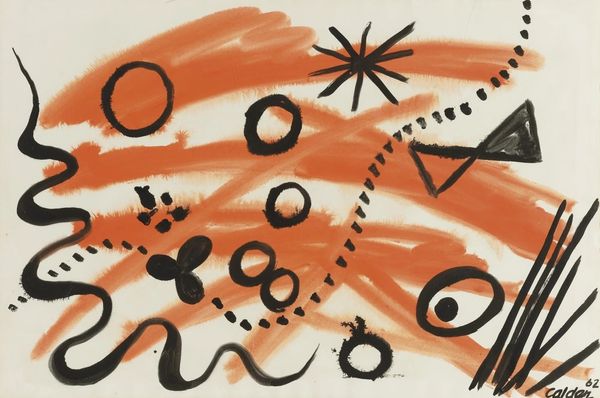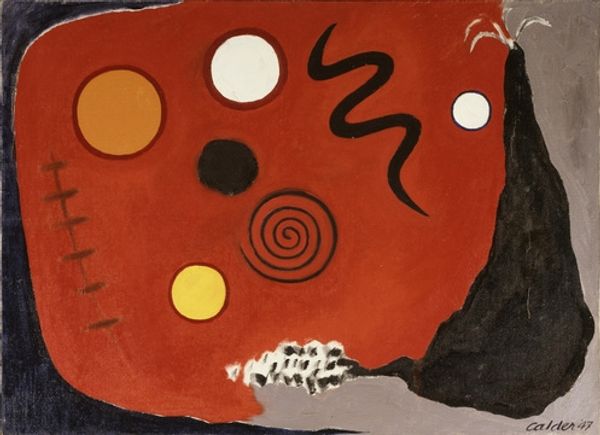
acrylic-paint
#
popart
#
pop art
#
acrylic-paint
#
abstract
#
geometric
#
abstraction
#
pop-art
#
line
Copyright: Modern Artists: Artvee
Curator: Welcome. We are looking at "Spotted S", an acrylic on paper work created in 1963 by the American artist Alexander Calder. Editor: Well, I am immediately struck by its playful energy. The primary colors—red, yellow, and blue—pop against the background. The forms feel dynamic, almost like they are floating. Curator: Calder, of course, is known for his mobiles, but he also made many paintings. Considering the political climate of 1963, we must consider this a radical act of freedom—an abstract antidote to the weight of social expectations. Pop art like this one embraced new attitudes to challenge old elitism. Editor: Yes, and it is so striking to consider its materiality—how the smooth fields of flat, bold color are interrupted by the more gestural strokes, introducing texture in surprising ways. The compositions itself, the balance and rhythm, draws the eye, too. I am seeing both spontaneity and control. Curator: That balance resonates deeply if we think about abstraction as a form of personal and collective liberation. Circles, lines, and colors—shapes unburdened by representation—become symbols of a boundless, hopeful future. Editor: You can certainly get a sense of this lightness as well from the contrast of precise shapes and the free brushwork—elements colliding—then reassembling into this unified form, as do, say, letters in typography? Or musical instruments in an orchestra. It's exhilarating. Curator: Ultimately, “Spotted S” gives us a vocabulary for joy. Editor: I agree entirely. Its visual elements interact on the plane—producing harmony in space and surface.
Comments
No comments
Be the first to comment and join the conversation on the ultimate creative platform.
